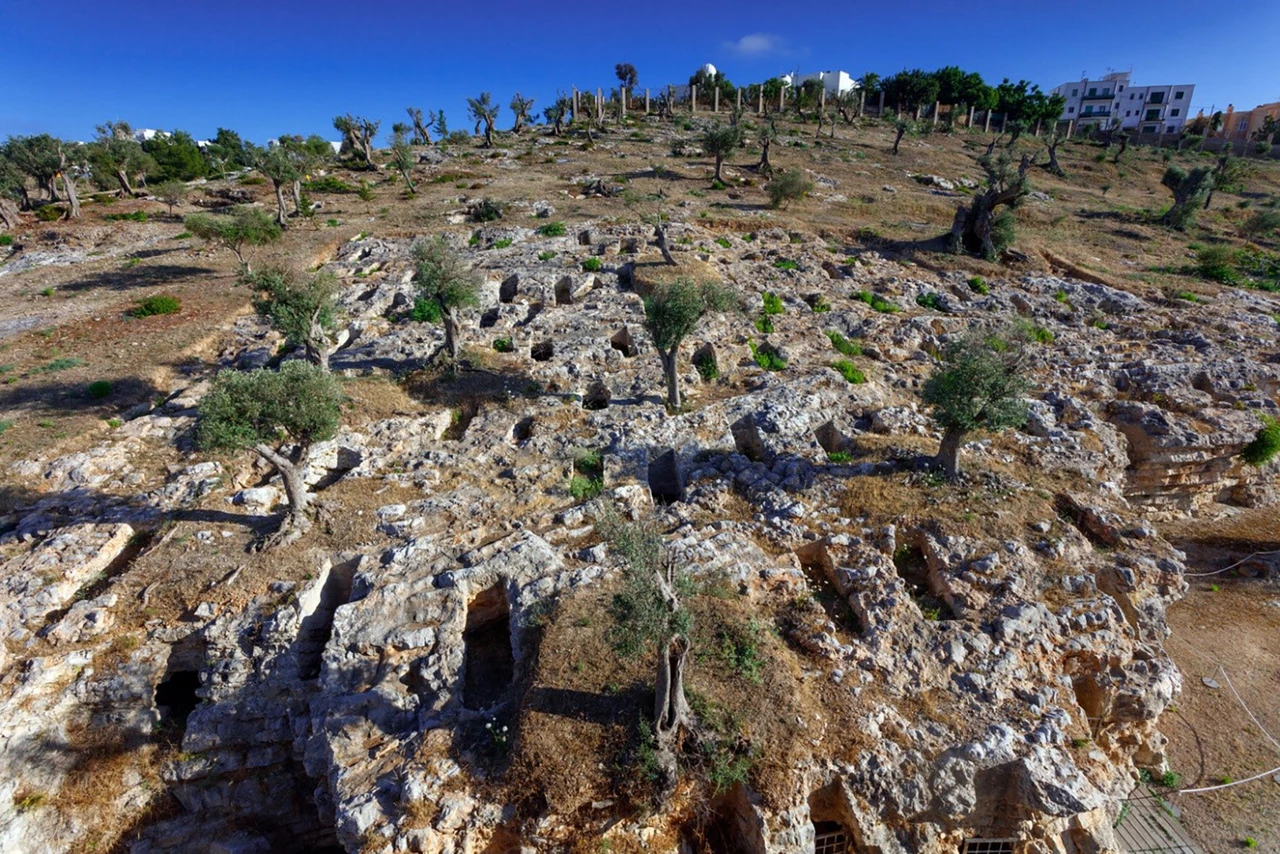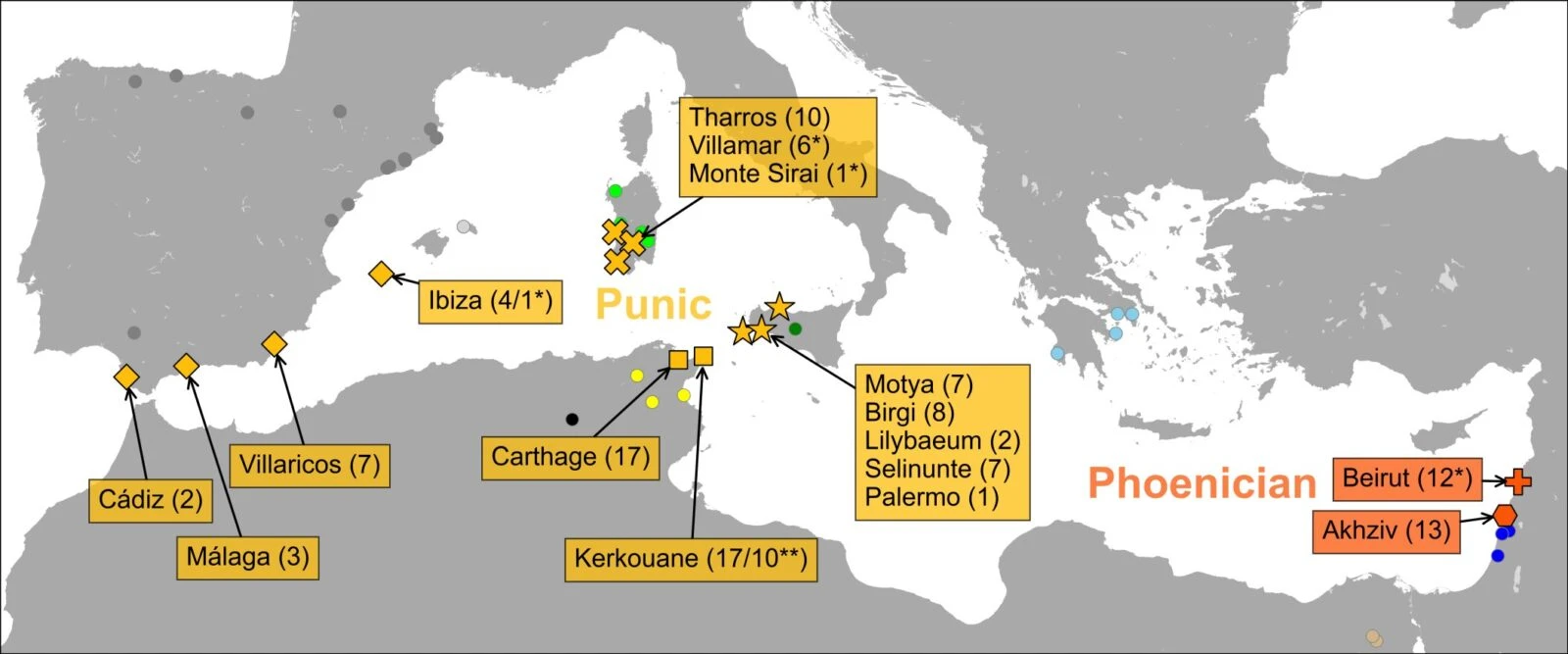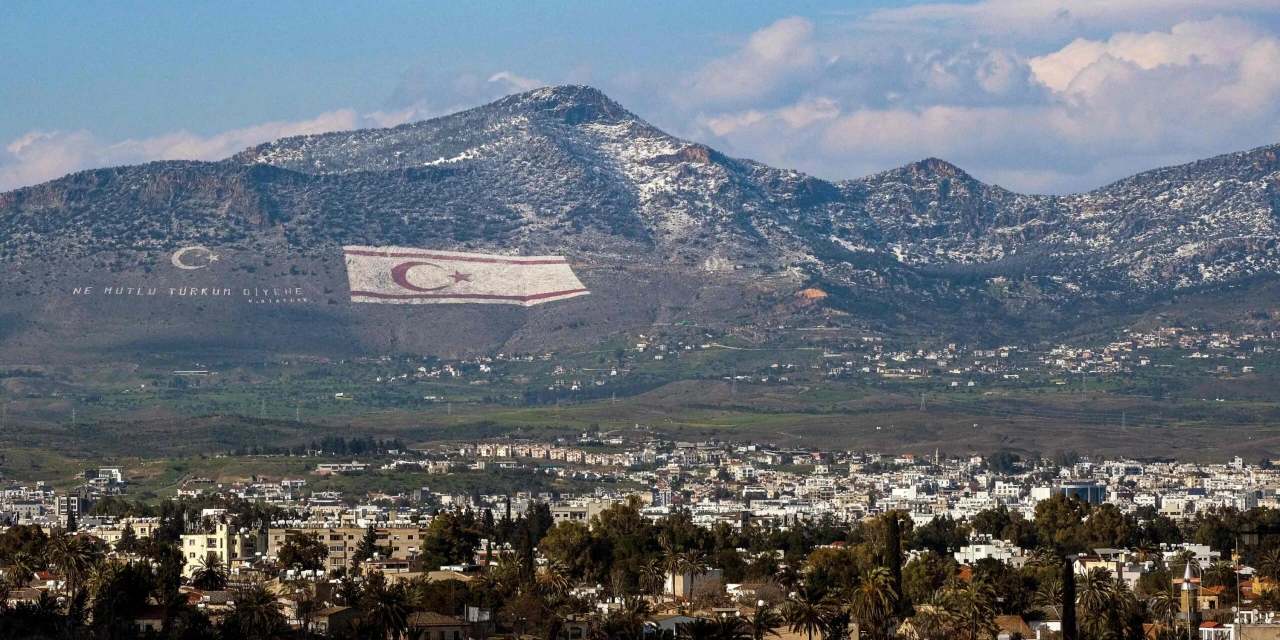Ancient DNA study challenges myths of Phoenician migration across Mediterranean
 Punic Necropolis of Puig des Molins on the island of Ibiza, Spain, April 23, 2025. (Photo via Raymar/MAEF)
Punic Necropolis of Puig des Molins on the island of Ibiza, Spain, April 23, 2025. (Photo via Raymar/MAEF)
An international team of researchers has uncovered new insights into the origins and expansion of the ancient Phoenician-Punic civilization, revealing that the spread of its culture across the Mediterranean was driven more by cultural exchange than by large-scale migration.
The study, published in Nature, was led by scientists from the Max Planck-Harvard Research Center for the Archaeoscience of the Ancient Mediterranean, including Johannes Krause of the Max Planck Institute for Evolutionary Anthropology and Michael McCormick of Harvard University.
Seafaring pioneers of the ancient world
Emerging from the Bronze Age city-states of the Levant, the Phoenicians were trailblazers in maritime trade, innovation, and culture. Their most enduring legacy is the alphabet—an invention that formed the basis for many modern writing systems. By the early first millennium B.C., these seafarers had established trading posts as far west as Iberia, spreading their influence through the central and western Mediterranean.
By the sixth century B.C., Carthage—a Phoenician colony in what is now Tunisia—had become a dominant power in the region. The Carthaginian Empire, later known as “Punic” by the Romans, is remembered for its fierce rivalry with Rome, including the legendary exploits of General Hannibal during the Punic Wars.
DNA reveals surprising findings
In the most comprehensive ancient DNA (aDNA) study of its kind, scientists sequenced human remains from 14 Phoenician and Punic archaeological sites across the Levant, North Africa, Iberia, and the Mediterranean islands of Sicily, Sardinia, and Ibiza.
The results challenge long-standing assumptions. “We find surprisingly little direct genetic contribution from Levantine Phoenicians to western and central Mediterranean Punic populations,” said lead author Harald Ringbauer, now a group leader at the Max Planck Institute.
“This provides a new perspective on how Phoenician culture spread—not through large-scale mass migration, but through a dynamic process of cultural transmission and assimilation.”
Cosmopolitan society across seas
The genetic data paints a picture of a deeply interconnected and diverse society. “We observe a genetic profile in the Punic world that was extraordinarily heterogeneous,” explained David Reich, a co-leader of the study and professor of genetics at Harvard University.

People buried at Punic sites showed a mix of ancestries, with the dominant genetic profile being most similar to contemporary populations in Sicily and the Aegean. Many individuals also carried significant North African ancestry.
A remarkable discovery was the identification of two individuals—likely second cousins—buried on opposite sides of the Mediterranean, one in North Africa and the other in Sicily. “Such findings reflect intense cross-Mediterranean connections,” said Ilan Gronau of Reichman University in Israel, who also co-led the study.
Culture through contact, not conquest
The evidence highlights that the Phoenician-Punic influence was not the result of mass population movements but rather a product of complex cultural interactions, trade, intermarriage, and shared practices across the Mediterranean.
Artifacts such as painted ostrich eggs found in Spain’s Villarricos necropolis—a North African custom—further underscore how Punic culture spread through symbolic and artistic exchange.
In a region where direct written records are scarce, this genetic approach offers a new lens to explore the movement, identity, and legacy of one of the Mediterranean’s most influential civilizations.



